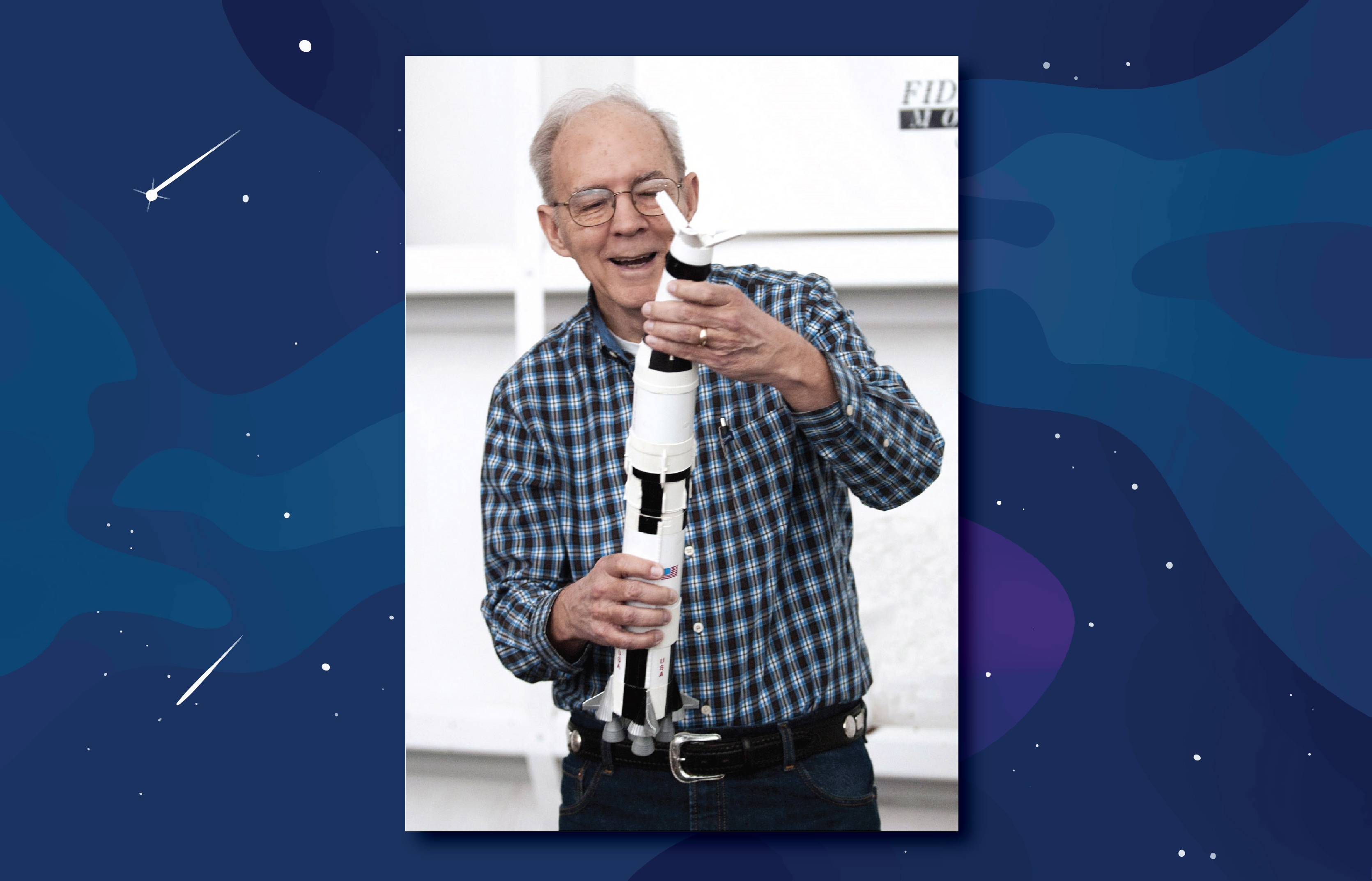
Retired Nasa Scientist Coming to Cinco Ranch Branch Library
NASA launched Apollo 11 to the moon more than 50 years ago on July 16, 1969. What exactly did it take to accomplish this successful, history-making mission? Hear a behind-the-scenes account from one of the NASA scientists who helped make that dream a reality, at a special program, “Apollo to the Moon with F. Don Cooper,” at Fort Bend County Libraries’ Cinco Ranch Branch Library on Saturday, June 3, from 10:30 am to 12:30 pm, in the Meeting Room of the library, located at 2620 Commercial Center Blvd in Katy.
The program will be divided into two parts. “Part I – To the Moon & Back” will take place from 10:30 to 11:30 am. The second half of the program, “Part II – Saturn Vehicle Guidance Equations,” will take place from 11:30 am to 12:30 pm. The public has a choice of attending the entire program or the individual sessions.
In Part I of the program, retired physicist F. Don Cooper will share his experiences creating the technology that helped launch Apollo 11 in 1969, and the efforts that his team went through to successfully bring the Apollo 13 crew home safely in 1970. Cooper will also discuss the history of U.S. rockets, and his role in designing the Saturn V ascent guidance and trans-lunar targeting equations that would help make space travel possible.
In Part II of Cooper’s program about the Apollo missions, he will talk more specifically about how geometry, algebra, calculus, and classical mechanics were used to produce the Saturn V guidance equations. Cooper will explain what the guidance equations were, how they were derived, who created them, and how well they worked. Students who are considering a career in a STEM-related field will gain insight into how mathematics and physics can be used to solve real-world problems.
An Oklahoma native, Cooper became fascinated with math and science while still in high school. He attended Oklahoma Baptist University, where he majored in physics and mathematics with a minor in chemistry. His career after college took him to Huntsville, Alabama, where he worked at the George C. Marshall Space Flight Center on NASA’s Apollo program, developing the targeting equations to guide the manned spacecraft from earth orbit to the moon. His career then led him to Houston’s Johnson Spaceflight Center, which would later become known as the Johnson Space Center. During his years there, Cooper worked on eight Apollo missions, the Atlas Centaur, the Air Force Dyna-Soar, and the Mars rocket NOVA. For the Apollo 13 mission, he provided the trans-lunar coast abort options to Houston Mission Control.
Cooper retired in 2002, and soon found a new calling – that of encouraging a new generation of students to pursue a future in the physical sciences. He enjoys speaking to youth groups, community organizations, schools and colleges, hoping to inspire the technology leaders of the future with his first-hand account of the events as they actually happened.
“Of the seven primary people who did this, I am the last one alive,” says Cooper. “Students do not know much about Apollo since it all happened before they were born. My objective is to show them how it happened, emphasize that education is essential, and show how math and physics solve real-world problems.”
The program is free and open to the public. For more information, see the Fort Bend County Libraries website (www.fortbend.lib.tx.us), or call the Cinco Ranch Branch Library (281-395-1311) or the library system’s Communications Office (281-633-4734).
Source: Fort Bend County Libraries







